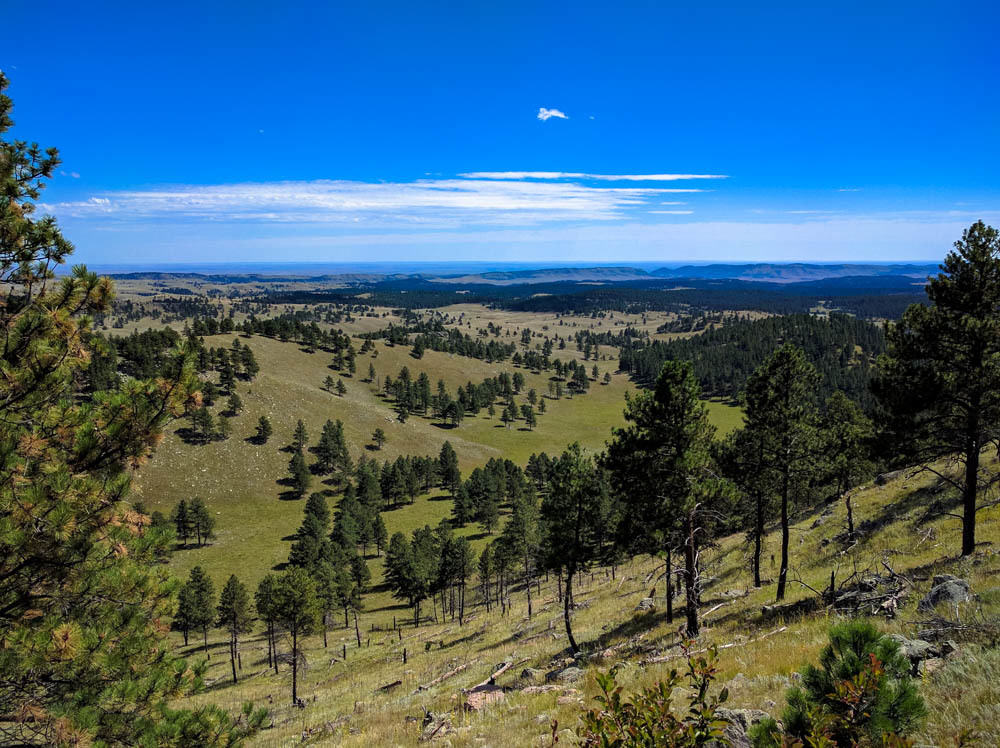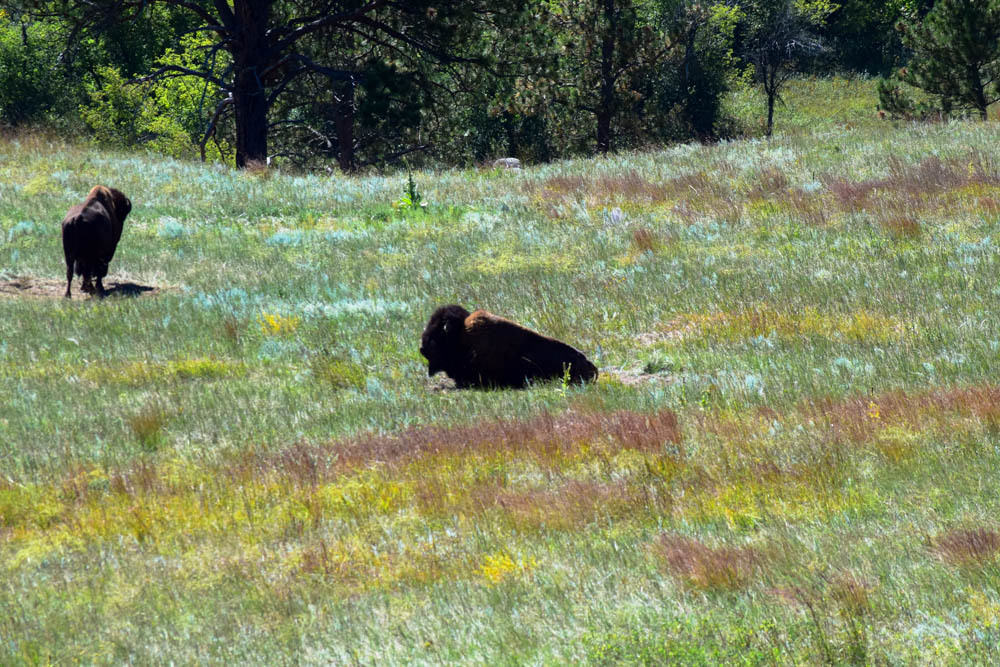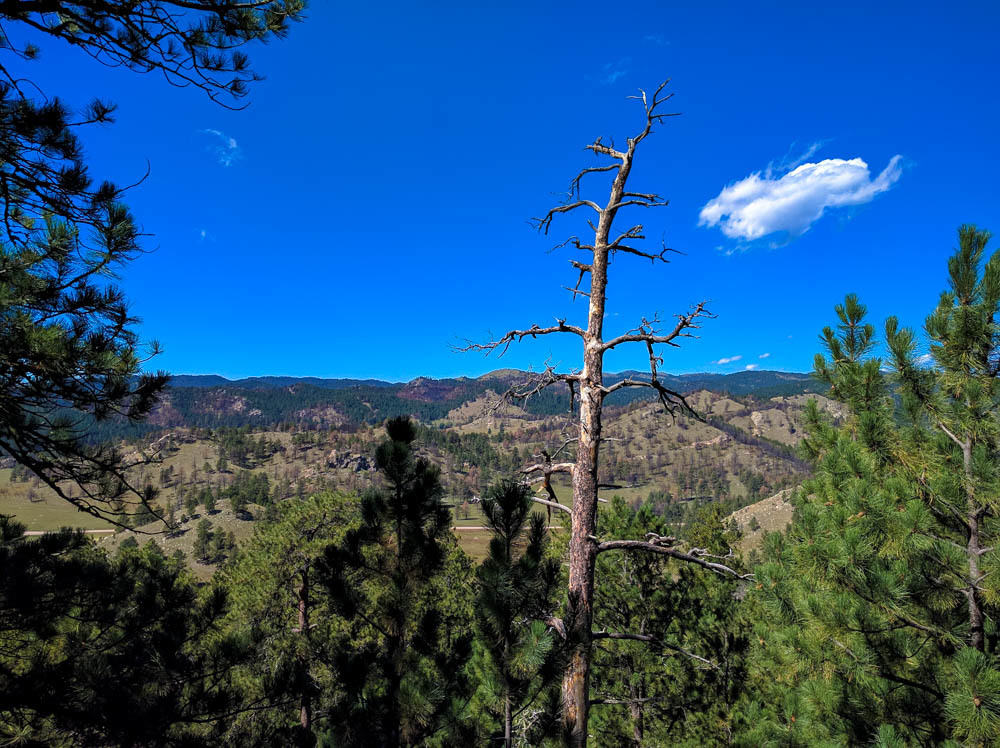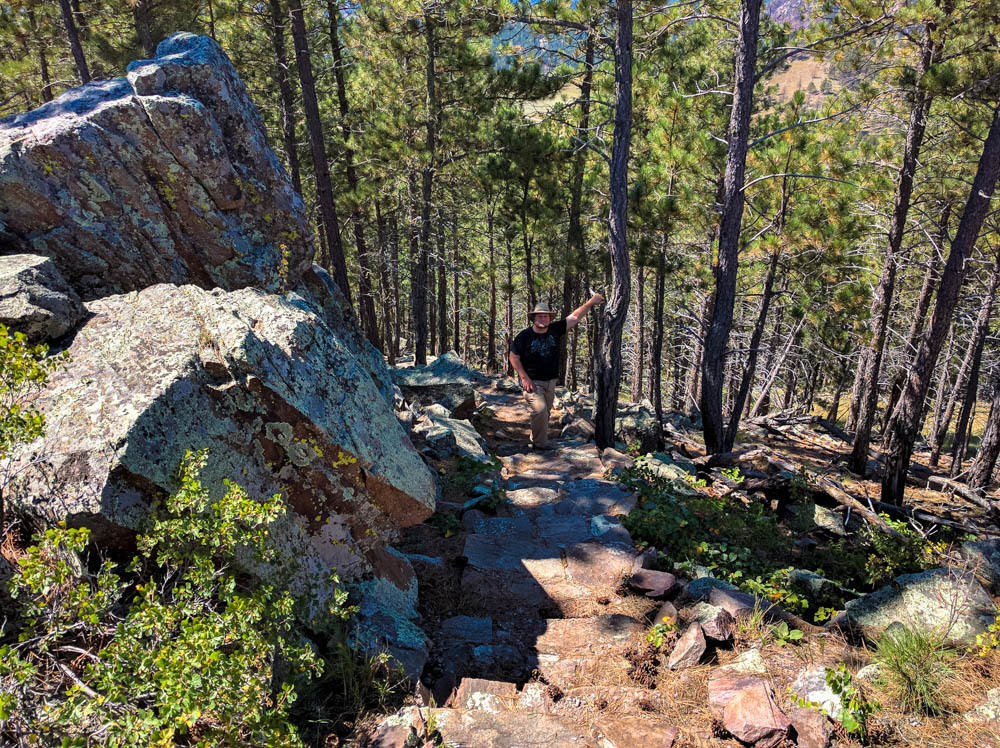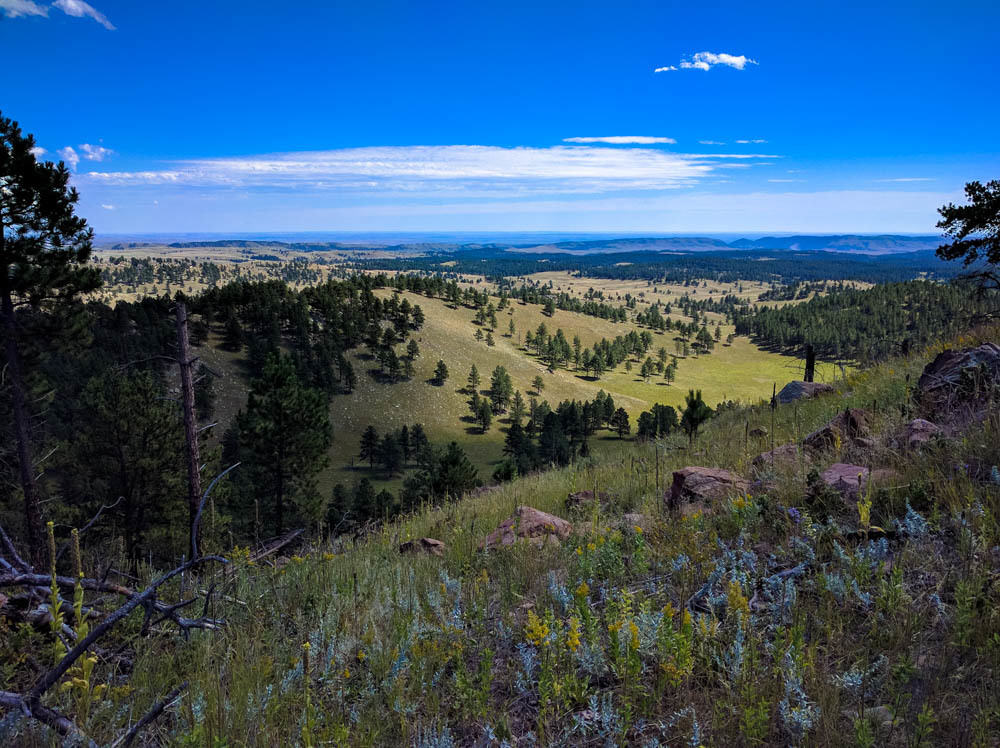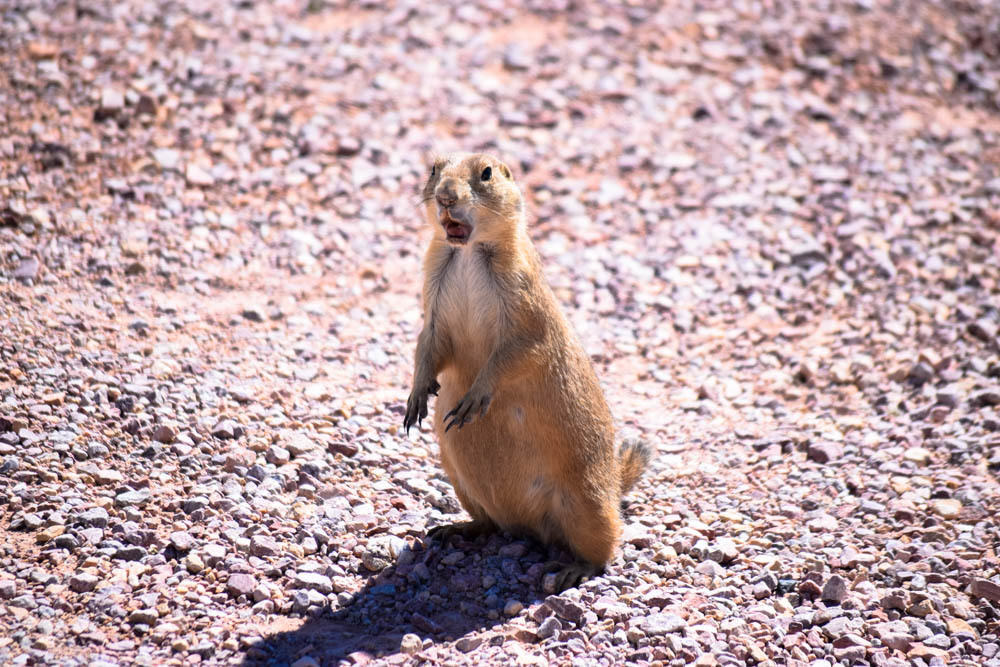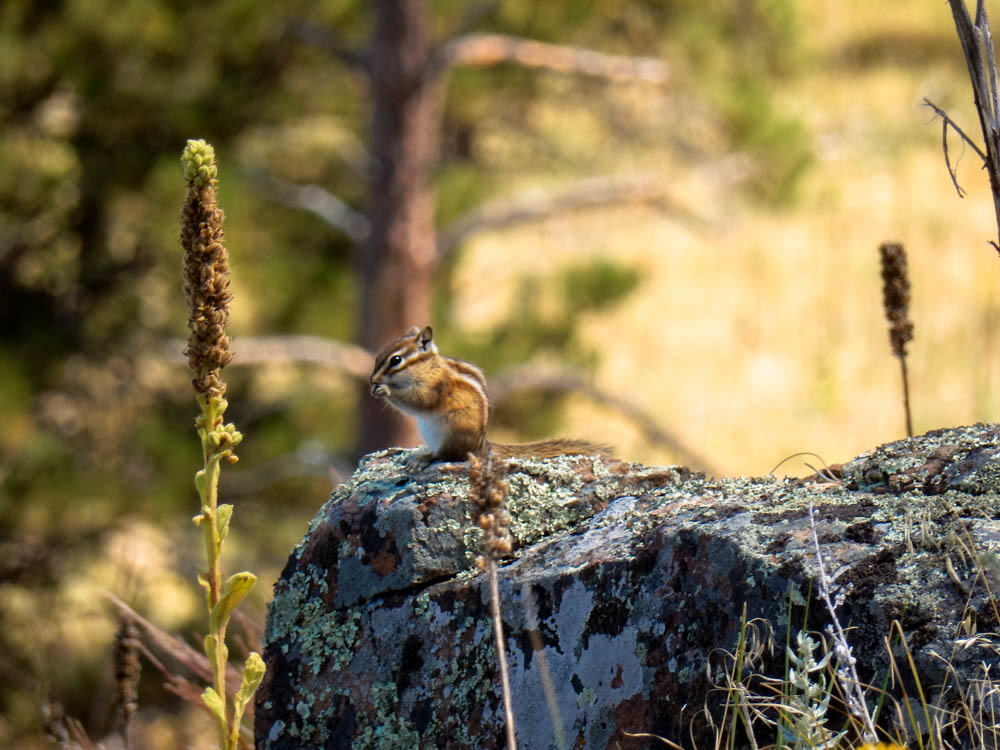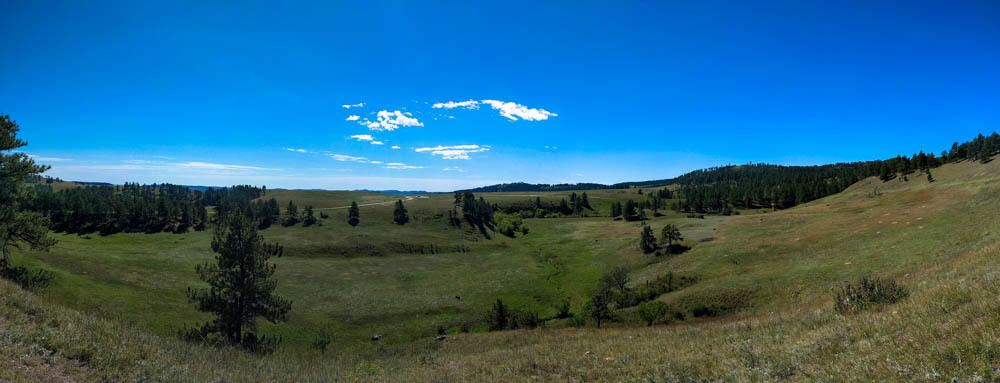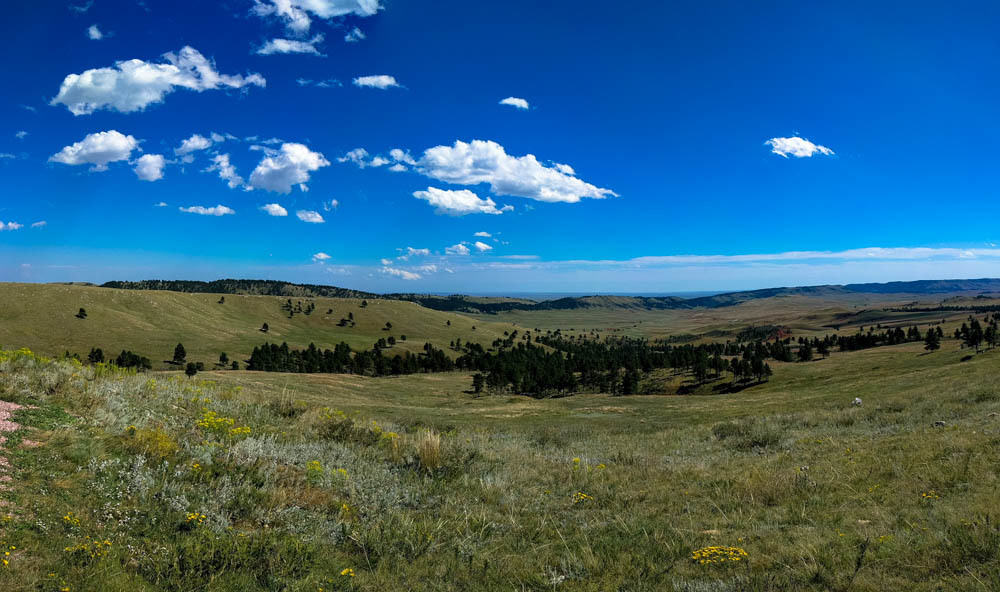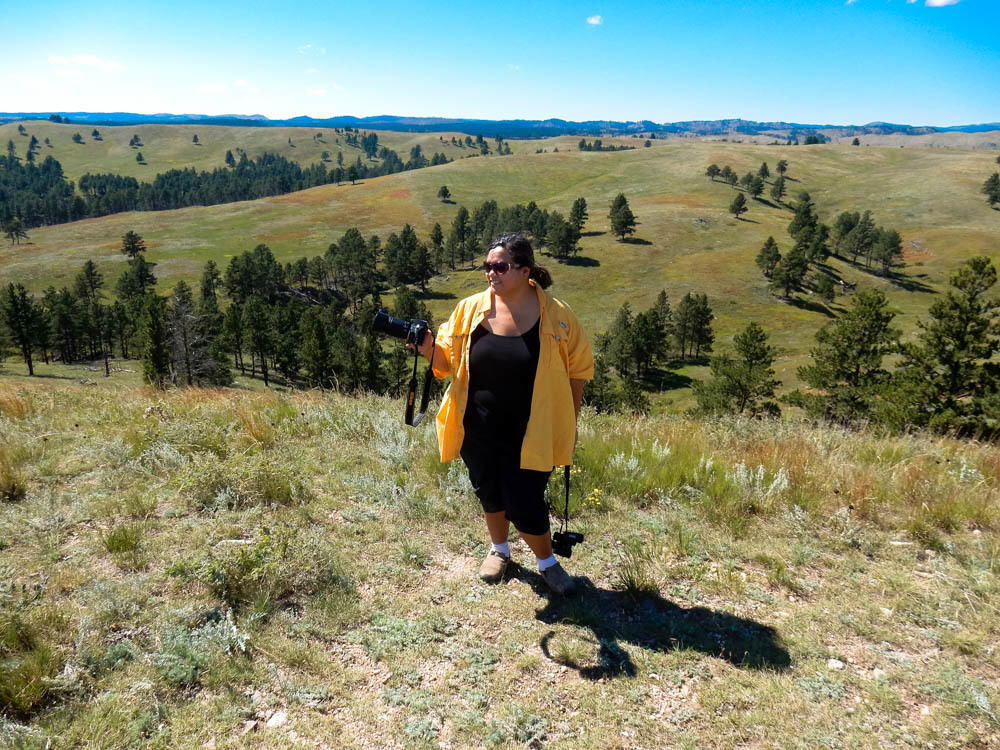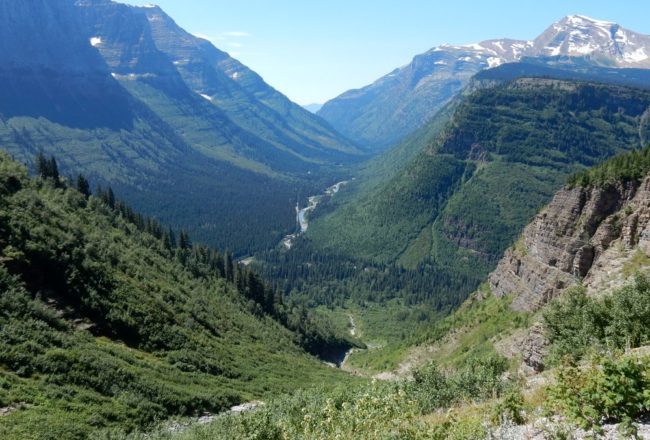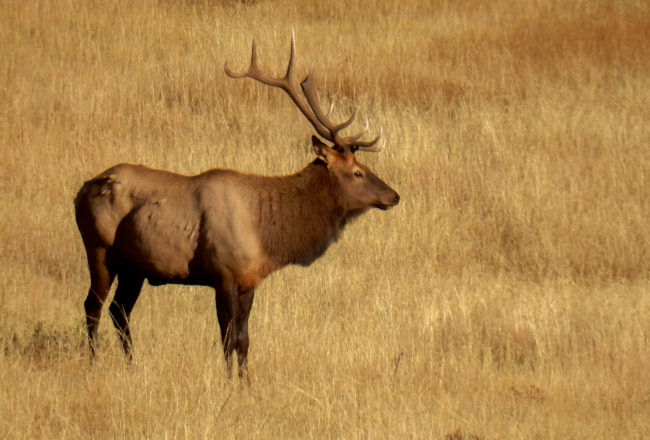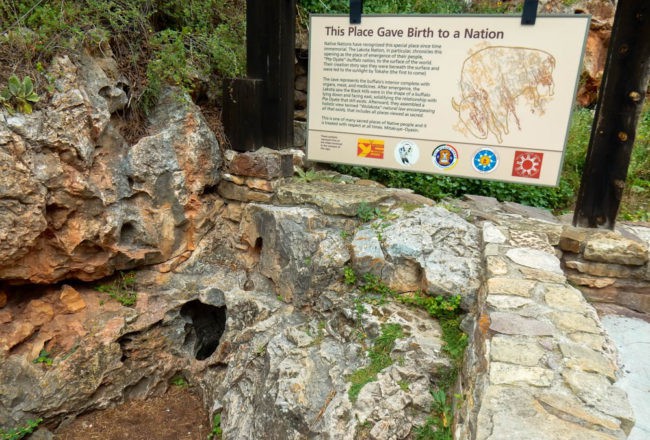I find it sad that a majority of people who visit Wind Cave miss out on half the park. They come for the caves, which are fantastic and not to be missed, but there’s this other half above ground full of wonderful wildlife and stunning scenery.
Scenic Drive Loop
On our second day of visiting Wind Cave, we started our driving tour just 4 miles north of the Visitor Center and headed north on South Dakota Highway 87. This stretch of paved road goes on for about 7 miles, but the first half is full of pullouts that provide views of mixed-grass prairie that roll to and from hill top to hill top. Here we spotted prairie dog villages and scattered bison bulls.
Beaver Creek Bridge
At the 2 mile marker, the road then passes over Beaver Creek Bridge. The bridge was built in 1929 to accommodate traveler access to Custer State Park, which is also north of Wind Cave. We got a pretty good view of it from a pullout near the Centennial Trailhead.
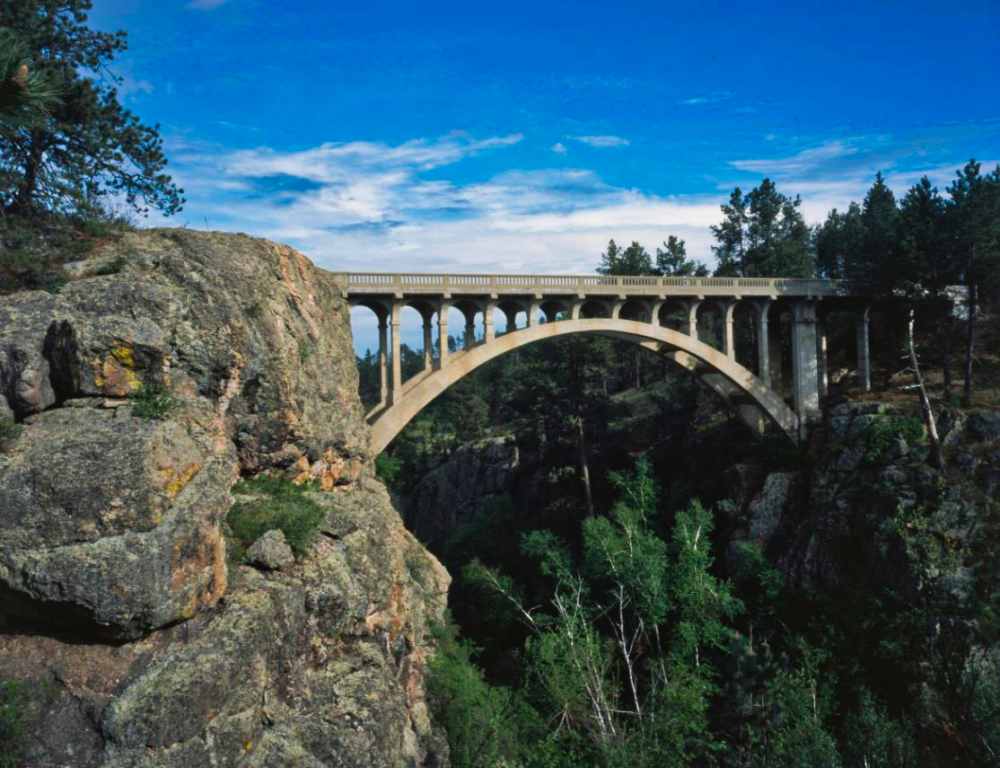
Beaver Creek Bridge – deck arch bridge built of concrete and steel
Pigtail Bridge
3 miles into the drive, we got to see our first spiral bridge. Called Pigtail Bridge by the locals because of how cars first go straight over the bridge and then around and under it. This bridge is one of several constructed by the South Dakota State Highway Commission during the development of Custer State Park. Designers decided to use local pine for its construction, in keeping with the park manager’s desires to blend into its natural surroundings.
Pegmatite Pullover
Just a few miles past that, we reached Reaves Gulch where a healthy riparian ecosystem thrived. If you’re observant and lucky you might catch a glimpse of wild turkeys or elk at the forest fringe. We were not lucky.
At one of the stops, I spotted an area that looked like it had been glitter-bombed. It turns out there was a deposit of Granite Pegmatite. These pink rocks formed about 1.7 billion years ago as a part of a large molten magma intrusion into an ancient mountain range.
I found this site particularly cool because there were large inclusions of crystals. Some of the prettiest formations of glassy quartz (quartz crystal that is clear as glass!) are found within Pegmatite. Mica can be also found in Pegmatite. The mica at this found within this pegmatite formed during a slow cooling process. So it looks like sheets of thin plastic fused together. If you’re careful you can peel sheets of mica apart into thin flakes, such that light can pass through it.
Incidentally, mica flakes are used in craft arts as kind of glitter, and high-quality ruby mica is used in capacitors. Yes, I know I’m geeking out about rocks, but they’re cool rocks.
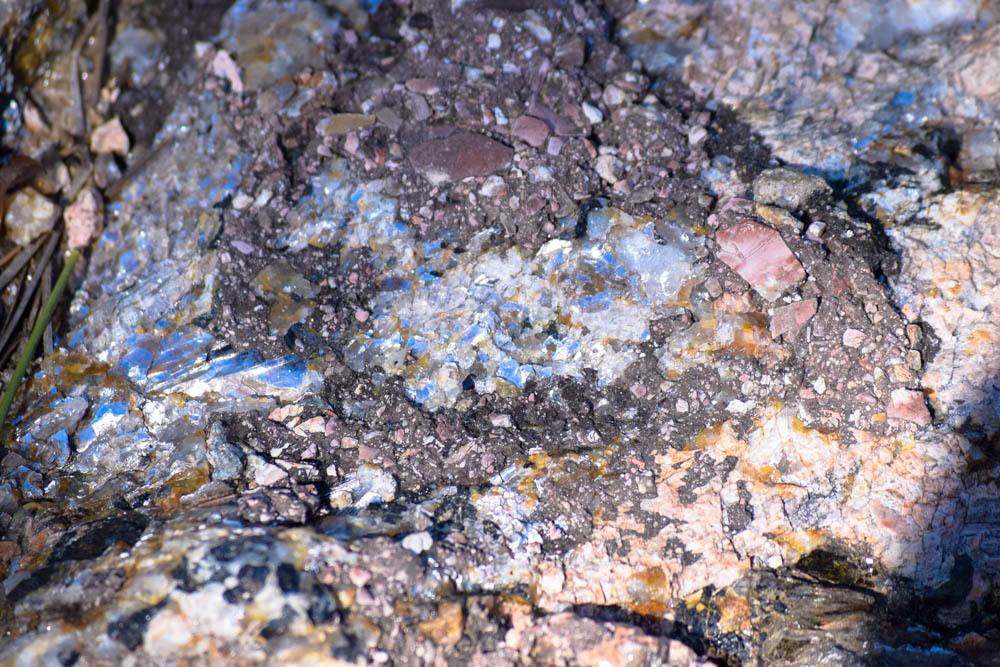
Granite Pegmatite contain exceptionally large crystals and they sometimes contain minerals that are rarely found in other types of rocks.
Rankin Ridge Nature Trail
At mile five, just beyond the Reaves Gulch, is a short spur drive up to the Rankin Ridge Trailhead. This is an easy interpretive trail every bit worth the hike. It has several stops at irregular intervals, so I really suggest downloading the PDF guide before going on the hike.
The trail is a 1-mile loop, which starts on a trail that winds up the hill and through a ponderosa pine forest. Just before the trail takes a moderately steep climb, there’s an outcrop of rocks which provides a great view of the southern boundary of the Black Hills.
Once we reached the ridge, we were rewarded with a spectacularly beautiful view of a valley and hills rolling away into the distance. Above there is a decommissioned fire lookout tower, which was once open to hikers but is now closed. From the tower, it’s an easy walk down an old service dirt road, back to the parking lot.
Into the Highlands
The forest line then broke open to more rolling hill and plains, and at mile 7, we turned right onto Highland Ridge Road, also known as NPS 5. This is a gravel road which gives visitors access to the less explored northern and eastern areas of Wind Cave National Park.
Much of Highland Ridge Road is surrounded by Black Tail Prairie Dog Villages, and for a good 3 miles, we had to drive very carefully lest we ended up with praise dog pizza. The prairie dog colonies here are so large you can see them in satellite mapping images.
Four miles from the turn-off, we stopped at Highland Ridge Overlook. here we got a great view of golden grass fields. Here is where herds of buffalo, pronghorn and elk like to roam, but today they evade us.
Red Valley
A few miles past Highland Ridge, the dirt road changes the name and becomes Red Valley Road, so named for the Red Valley it winds through. Surrounded by cliffs of Opeche Shale, composed of red to maroon shale at the bottom and then topped by lavender mudstone and siltstone. Here we caught glimpses of prairie falcons and meadowlarks
Back to Wind Cave
Red Valley Road comes to a “T’ at 7-11 road, so we turn right back toward the Visitor Center. This road is outside the boundaries of Wind Cave National Park and doesn’t intersect with that land until it meets up with US Highway 385. At highway 385, we turn right and pass Gobbler Ride and Bison Flats before returning to the Visitor Center.
I should mention Bison Flats is another great area for spotting bison, pronghorn, and elk. At the visitor center, there are kiosks describe how these animals were reintroduced to the park. Back before it gained its National Park Status, Wind Cave was a National Game Preserve. So the government shipped fourteen bisons from the New York Zoological Society in 1913. In 1914, fourteen Rocky Mountain elk were delivered from Yellowstone National Park, along with thirteen pronghorn antelope from Alberta, Canada.
Best of Both Worlds
There is a lot of stuff packed into this small park, and it’s hard to believe that there could be so much in only 28,000 acres: 140 miles of caves underground, several trails and wildlife above ground. I certainly enjoyed my time at Wind Cave and wished I had more.
